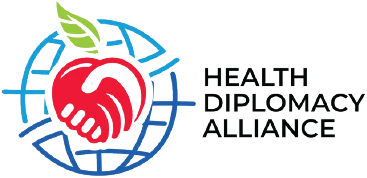More Than Medications: The Role of Pharmacists in Medical Device Counselling

It has often been the case that, when people imagine a pharmacist, they picture someone behind the counter, dispensing medications and offering advice on prescriptions. But in today’s modern healthcare landscape, pharmacists are stepping into a more expanded role—one that goes beyond medications to include preventive care and health monitoring. In line with this, as noncommunicable diseases are still the leading cause of global mortality, it is becoming more common for patients to use medical devices to monitor and take care of their health. That’s an area where pharmacists can come in, as having medical devices isn’t enough—knowing how to use them correctly is equally important, if not more. Pharmacists are recognised as the most accessible healthcare professionals, often the first to see patients with health concerns. Whether it’s a quick blood pressure check at the pharmacy or a discussion about managing blood sugar, pharmacists play a key role in educating patients about their medications and the medical devices that will help them stay healthy. For instance, patients newly diagnosed with diabetes are likely instructed to monitor their blood sugar, but without proper guidance, they might struggle with using a glucometer and end up with inaccurate measurements. A pharmacist who can counsel and demonstrate their use will ensure the patient avoids errors and unnecessary complications. Yet, despite this crucial role, many pharmacists may not be getting the training they need. A study among graduating BS pharmacy students in Metro Manila, Philippines, found that a significant number had limited knowledge of diabetes management devices, as 51.89% had low knowledge with insulin syringes, 26.89% with insulin pens, and 12.26% with glucometers. These numbers highlight an opportunity to integrate more optimized education and training. To equip pharmacists with the necessary skills, pharmacy education must evolve. Some suggestions that can be done include: Curriculum Integration – Medical devices should be a core part of the pharmacy curriculum, with dedicated lessons on their function, proper use, and troubleshooting. Hands-On Training – Practical experience with medical devices should be a standard part of pharmacy education, focusing on technique and counselling. Ongoing Learning – Pharmacists should have access to workshops, certifications, and continuous professional development focused on medical device counselling, factoring in the differences of medical devices per manufacturer. As healthcare shifts toward prevention rather than just treatment, pharmacists also have a role to play. By knowing salient points of both medication and medical device counselling, they can further empower patients to take charge of their health. At the end of the day, a pharmacist’s job isn’t just about handing over the medicines listed in a prescription, they make sure that patients have the knowledge and confidence to manage their health effectively. About the Author Bill Whilson Baljon Public Health Advocate Bill Whilson Baljon is a public health advocate from the Philippines. He is dedicated to promoting health equity and empowering communities through his work in health promotion, policy advocacy, and community engagement.
May Special Edition Newsletter

Special Edition may newsletter

